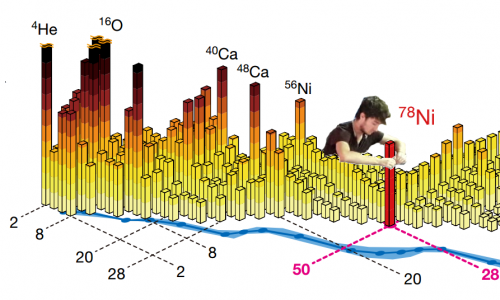Intruder states and shape coexistence beyond N=50 close to 78Ni studied by neutronknockout at RIBF-RIKEN
PhD Defense
2023 november, 23
Léo Plagnol
Intruder states and shape coexistence beyond N=50 close to 78Ni studied by neutron knockout at RIBF-RIKEN
The recent spectroscopy of 78Ni together with indications of shape coexistence just below the N=50 shell closure for 79Zn suggests that deformed intruder configurations could play a crucial role in low-energy structure properties in this region and towards the limits of the nuclear chart. Such configurations are predicted to originate from multiparticle-multihole excitations above the N=50 and Z=28 shell gaps pushed down in energy due to neutron-proton correlations which enhance quadrupole collectivity. Because these intruder states involve many-particle excitations more difficult to describe theoretically, their predicted energies vary more drastically between models than for yrast states originating from “normal” configurations on which they tend to agree.
This topic is the main goal of the experiment performed at the RIBF facility (RIKEN, Japan) in November 2020 to identify and characterize for the first time 2p-1h intruder states in 83Ge. Neutron hole states in this N=51 nucleus were populated
via neutron knockout reaction from the N=52 nucleus 84Ge that has about two neutrons in the s1/2d5/2 valence space above N=50. This direct reaction allows in some cases to remove one of the neutrons from the quasi-full g9/2 orbital below N=50 to selectively populate the 9/2 + intruder states based on a ν(g9/2)−1
(s1/2d5/2) +2 configuration. In order to identify the populated states, gamma-rays from their in-flight decay were measured using the HiCARI Germanium array.
We are able to identify a state at 1359 keV as a 2p-1h intruder, in good agreement with phenomenological and shell model calculations. In line with predictions as well, we measure some candidate states at high energy that are still to be fully characterised. A transition at 1240 keV matches with previously identified states and was expected to come from the coupling of a neutron with the excited 82Ge core. However the very high spectroscopic factor measured on this transition does not
compare with any prediction and requires more development to be explained.
